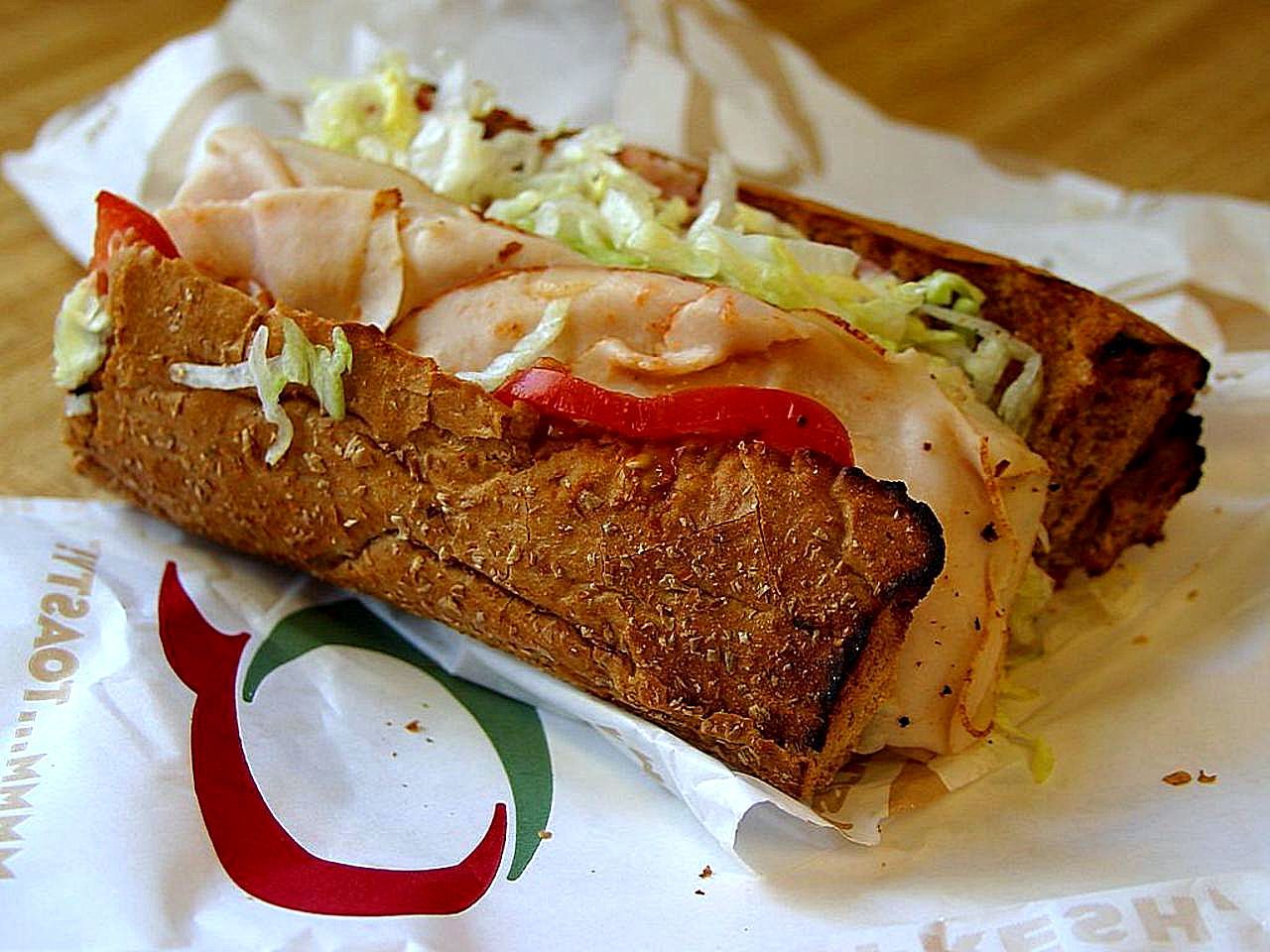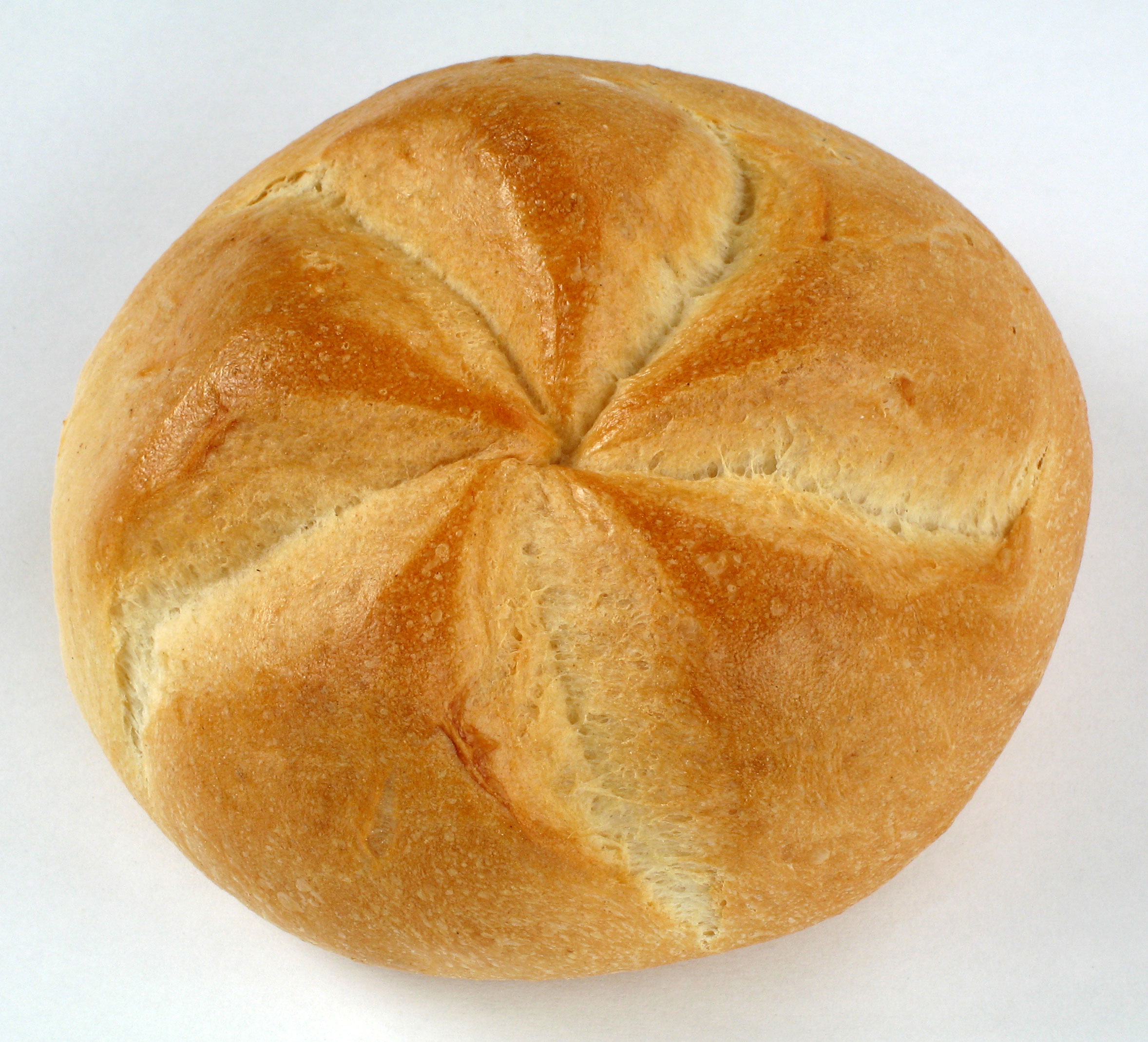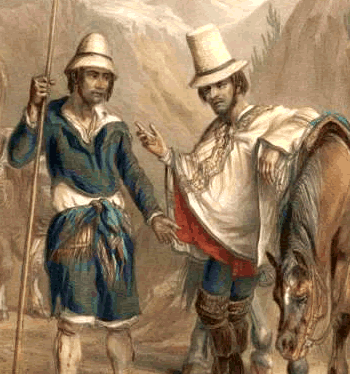|
Panino
Panini (), nowadays less commonly called panino (), are sandwiches made with Italian bread (such as ciabatta and ), usually served warm after grilling or toasting. In many English-speaking countries, the name is given to a grilled sandwich made using various breads. The bread is cut horizontally and filled with deli ingredients, and often served warm after having been pressed by a warming grill. Etymology is a word of Italian origin. In Italian, the noun (; : ) is a diminutive of () and refers to a bread roll. () refers to a sandwich, but the word is also often used alone to indicate a sandwich in general. In English dominant countries, is widely used as the singular form, with the plural form or , although some speakers use singular and plural as in Italian. History Although the first US reference to panini dates to 1956, and a precursor appeared in a 16th-century Italian cookbook, the sandwiches became trendy in Milanese bars, called , in the 1970s and 19 ... [...More Info...] [...Related Items...] OR: [Wikipedia] [Google] [Baidu] |
List Of Sandwiches
Sandwiches are a common type of lunch food often eaten as part of a packed lunch. There are many types of sandwiches, made from a diverse variety of ingredients. The sandwich is the namesake of John Montagu, Earl of Sandwich, a British statesman. Major types of sandwiches include: * Two slices of bread with other ingredients between * Two halves of a baguette or roll with other ingredients between * Hero, hoagie, or submarine sandwich A submarine sandwich, commonly known as a sub, is a type of American cold or hot sandwich made from a submarine roll (an elongated bread roll) that is split lengthwise and filled with meats, cheeses, vegetables, and condiments. Although "subma ... * Open-faced sandwich * Pocket sandwich Sandwich cookies and ice cream sandwiches are generally not considered sandwiches in the sense of a bread-containing food item, but are named by analogy. Sandwiches See also * Hot dog variations * List of bread dishes * List of hamburgers * List ... [...More Info...] [...Related Items...] OR: [Wikipedia] [Google] [Baidu] |
Paninaro
''Paninaro'' () was a social phenomenon in northern Italy during the 1980s that was characterized by an obsession with designer clothing and adherence to a lifestyle based on luxury consumption. It began in the Milanese metropolitan area, later spreading throughout continental Italy. The phenomenon led to the creation of magazines, films and television programs. Italian designer brands associated with ''Paninaro'' such as Stone Island, C.P. Company, Armani, and Fila were adopted by members of the football casual subculture in the United Kingdom. History In the early 1980s the areas of Milan were frequented by groups of young people with their own rules and styles, such as metalheads or goths. Within this context, a group was established, which consisted predominantly of youngsters, who met at the local area of Piazza San Babila. This group defined its own vocabulary and created a trend based on the ostentation of very expensive designer garments. At the same time th ... [...More Info...] [...Related Items...] OR: [Wikipedia] [Google] [Baidu] |
Bread Roll
A bread roll is a small, oblong individual loaf of bread served as a meal accompaniment (eaten plain or with butter). Rolls can be served and eaten whole or are also commonly cut and filled – the result of doing so is considered a '' sandwich'' in English. Europe Rolls are common throughout Europe. Even in the same languages, rolls are known by a variety of names. Some European languages have many local and dialectal terms for bread rolls. These include German language diminutives of ''Brot'' (bread) in most of western and central Germany (where they are called ''Brötchen'') and in Switzerland (where they are called ''Brötli''). Other German language terms include ''Rundstück'' ("round piece") in Hamburg and Schleswig-Holstein; ''Weckerl'' or more specific ''Semmel'' in Austria, Saxony and southern Bavaria; ''Weck'' and ''Weckle'' in much of Baden-Württemberg, Franconia and Saarland; ''Schrippe'' in Berlin and parts of Brandenburg. Some of these names reappear in other E ... [...More Info...] [...Related Items...] OR: [Wikipedia] [Google] [Baidu] |
Italian Language
Italian (, , or , ) is a Romance language of the Indo-European language family. It evolved from the colloquial Latin of the Roman Empire. Italian is the least divergent language from Latin, together with Sardinian language, Sardinian. It is spoken by about 68 million people, including 64 million native speakers as of 2024. Italian is an official language in Languages of Italy, Italy, Languages of San Marino, San Marino, Languages of Switzerland, Switzerland (Ticino and the Grisons), and Languages of Vatican City, Vatican City; it has official Minority language, minority status in Minority languages of Croatia, Croatia, Slovene Istria, Romania, Bosnia and Herzegovina, and the municipalities of Santa Teresa, Espírito Santo, Santa Tereza, Encantado, Rio Grande do Sul, Encantado, and Venda Nova do Imigrante in Languages of Brazil#Language co-officialization, Brazil. Italian is also spoken by large Italian diaspora, immigrant and expatriate communities in the Americas and Austral ... [...More Info...] [...Related Items...] OR: [Wikipedia] [Google] [Baidu] |
Pie Iron
A pie iron, also called pudgy pie iron, sandwich toaster, snackwicher, toastie maker, sandwich maker, panini grill is a cooking appliance that consists of two hinged concave, round or square, cast iron or aluminium plates on long handles. Its "Clamshell design, clamshell" design resembles that of a waffle iron, but without the checkered pattern. Pie irons are used to heat, toast and seal the sandwich. Name The most common type in most countries are electrically heated counter-top models, and names vary from place to place. In the United Kingdom, the pie iron is referred to as a "toastie maker" or "toasted sandwich maker". Origins In the U.S., the ''Tostwich'' is possibly the earliest toasted sandwich maker, dating back to before 1920. However, it was not patented until 3 March 1925 (applied for on 26 May 1924). It was invented by Charles Kozak, whose other inventions include a popcorn maker, corn-popping machine for the mass production of popcorn. Operation Modern versions ... [...More Info...] [...Related Items...] OR: [Wikipedia] [Google] [Baidu] |
The Quarto Group
The Quarto Group is a global illustrated book publishing group founded in 1976. It is domiciled in the United States and listed on the London Stock Exchange. Quarto creates and sells illustrated books for adults and children, across 50 countries and in 40 languages, through a variety of traditional and non-traditional channels. Quarto employs c.330 people in eight offices in London, Brighton, New York City, Boston, Seattle, Southern California and Hong Kong. In July 2020, its publication ''This Book Is Anti-Racist'' by Tiffany Jewell reached the Number 1 position on The New York Times bestseller list. The group was established by co-founders Laurence Orbach and Robert Morley and was listed on the London Stock Exchange in 1986. Laurence Orbach was chairman and CEO until November 2012, when he was replaced as chairman by Tim Chadwick and Marcus Leaver as CEO. Chuk Kin Lau, the principal shareholder, became Group CEO in July 2018. In February 2020, the Italian publisher, Giunti ... [...More Info...] [...Related Items...] OR: [Wikipedia] [Google] [Baidu] |
Wiley (publisher)
John Wiley & Sons, Inc., commonly known as Wiley (), is an American multinational publishing company that focuses on academic publishing and instructional materials. The company was founded in 1807 and produces books, journals, and encyclopedias, in print and electronically, as well as online products and services, training materials, and educational materials for undergraduate, graduate, and continuing education students. History The company was established in 1807 when Charles Wiley opened a print shop in Manhattan. The company was the publisher of 19th century American literary figures like James Fenimore Cooper, Washington Irving, Herman Melville, and Edgar Allan Poe, as well as of legal, religious, and other non-fiction titles. The firm took its current name in 1865. Wiley later shifted its focus to scientific, technical, and engineering subject areas, abandoning its literary interests. Wiley's son John (born in Flatbush, New York, October 4, 1808; died in East ... [...More Info...] [...Related Items...] OR: [Wikipedia] [Google] [Baidu] |
Tramezzino
(; : ) is an Italian sandwich consisting of two slices of soft white bread, with the crusts removed, usually cut in a triangle. Popular fillings include prosciutto, tuna, and olives, but many other fillings can be used. Etymology The term was coined by Gabriele D'Annunzio to replace the English word ''sandwich''. It is the diminutive of the word , meaning 'in-between' (formed with the addition of the suffix ). History The origin of the can be found in the Caffè Mulassano in Piazza Castello, Turin, where it was devised in 1925 as an alternative to English tea sandwich. See also * List of sandwiches Sandwiches are a common type of lunch food often eaten as part of a packed lunch. There are many types of sandwiches, made from a diverse variety of ingredients. The sandwich is the namesake of John Montagu, Earl of Sandwich, a British statesman ... * Panini * References {{Sandwiches Italian sandwiches ... [...More Info...] [...Related Items...] OR: [Wikipedia] [Google] [Baidu] |
Panuozzo
''Panuozzo'' (; Neapolitan: ''o' panuozzo''; : ''panuozzi''; ''panuozzo'' = ''pane'' + ''ozzo'') is an Italian sandwich of pizza bread stuffed with fillings of meat and vegetables. It was invented in 1983 by the '' pizzaiolo'' () Giuseppe Mascolo, from the ''comune'' (municipality) of Gragnano, near Naples, Italy, and was first adopted in the region of the Monti Lattari ( Pimonte, Agerola, and Sant'Antonio Abate). Various fillings can be used, such as mozzarella or other dairy products, tomatoes, several vegetables (e.g., aubergine and courgette), Italian sausages and sliced meats, '' friggitelli'', and so on. ''Panuozzo'' is officially recognised as a '' prodotto agroalimentare tradizionale'' (PAT).. Entry 460 Panuozzo, Campania region. Gallery File:Panuozzo vegetariano, Utrecht, July 2024 - 1.jpg, ''Panuozzo vegetariano'' (), Utrecht, 2024 File:Panuozzo vegetariano, Utrecht, July 2024 - 2.jpg, Pair of ''panuozzi'' with a forkful of fillings, Utrecht, 2024 File:Panuozzo ... [...More Info...] [...Related Items...] OR: [Wikipedia] [Google] [Baidu] |
La Repubblica
(; English: "the Republic") is an Italian daily general-interest newspaper with an average circulation of 151,309 copies in May 2023. It was founded in 1976 in Rome by Gruppo Editoriale L'Espresso (now known as GEDI Gruppo Editoriale) and led by Eugenio Scalfari, Carlo Caracciolo, and Arnoldo Mondadori Editore as a leftist newspaper, which proclaimed itself a "newspaper-party" (). During the early years of , its political views and readership ranged from the reformist left to the extraparliamentary left. Into the 21st century, it is identified with centre-left politics, and was known for its anti- Berlusconism, and Silvio Berlusconi's personal scorn for the paper. In April 2020, the paper was acquired by the GEDI Gruppo Editoriale of John Elkann and the Agnelli family, who is also the founder and owner of . Maurizio Molinari, the then editor of , was appointed as 's editor in place of ; this prompted the resignation of several journalists opposed to this change. Un ... [...More Info...] [...Related Items...] OR: [Wikipedia] [Google] [Baidu] |
Treccani
Institute Giovanni Treccani for the publication of the Italian Encyclopedia (), also known as Treccani Institute or simply Treccani, is a cultural institution of national interest, active in the publishing field, founded by Giovanni Treccani and Giovanni Gentile in 1925. It is known for publishing the first edition and the subsequent ten supplements of the ''Italian Encyclopaedia of Science, Literature and Arts'' (). History The Institute of the Italian Encyclopaedia was founded in Rome in 1925 by Giovanni Treccani, with the philosopher Giovanni Gentile as editor-in-chief. The first publication by the Institute was the ''Enciclopedia Italiana di Scienze, Lettere e Arti'' (). This encyclopaedia, best known as ''Enciclopedia Italiana'' or the ''Great Encyclopaedia'', is an Italian-language encyclopaedia and is regarded as one of the great encyclopaedias, being international in scope, alongside ''Encyclopædia Britannica'' and others. Since the 1990s, Treccani has been playing ... [...More Info...] [...Related Items...] OR: [Wikipedia] [Google] [Baidu] |
Status Symbol
A status symbol is a visible, external symbol of one's social position, an indicator of Wealth, economic or social status. Many luxury goods are often considered status symbols. ''Status symbol'' is also a Sociology, sociological term – as part of social and sociological symbolic interactionism – relating to how individuals and groups interact and interpret various cultural symbols. Etymology The term "status symbol" was first written in English in 1955, but from 1959 with the publication of the bestseller "The Status Seekers" greater distribution. There, journalist Vance Packard describes the social strategy and behavior in the USA. By region and time As people aspire to high status, they often seek also its symbols. As with other symbols, status symbols may change in value or meaning over time, and will differ among countries and cultural regions, based on their economy and technology. For example, before the invention of the printing press, possession of a large col ... [...More Info...] [...Related Items...] OR: [Wikipedia] [Google] [Baidu] |






